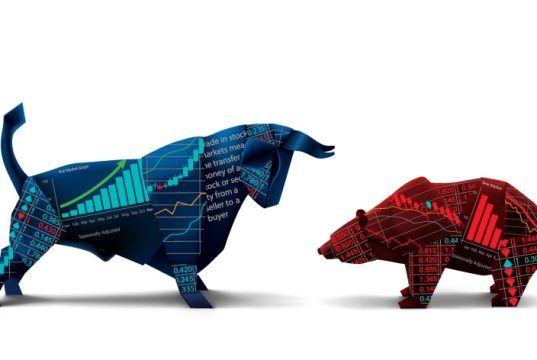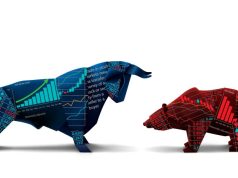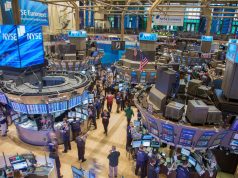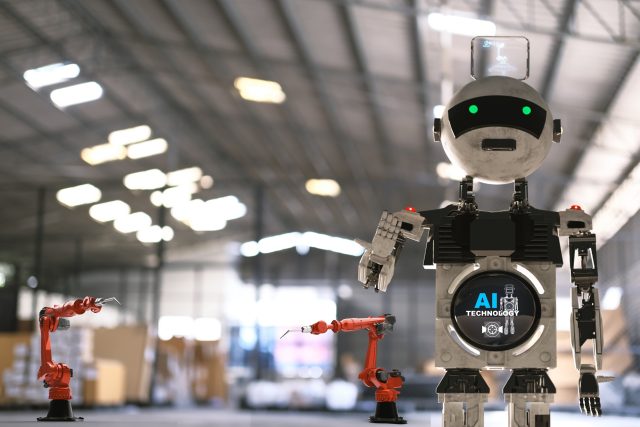Congress Is Buying These 4 Stocks — Should you?
There’s been growing momentum in Congress to ban stock trading by U.S. lawmakers — but for now, we still get a rare glimpse into what some elected officials are adding to their portfolios. Recent disclosures show members of Congress buying into four heavyweight stocks that also happen to be longtime Warren Buffett holdings. While the headlines focus on the political angle, we think there are strong business reasons these names are worth attention — regardless of who’s buying.
Here’s a closer look at why these stocks deserve a spot on your radar for the months ahead.
Amazon (AMZN): Cloud Strength and AI Tailwinds Keep This Giant Attractive
Amazon (NASDAQ: AMZN) has been a bipartisan favorite in Congress recently, with Rep. Dwight Evans (D-PA) and Rep. Marjorie Taylor Greene (R-GA) both adding shares in April. And it’s easy to see why. Amazon is still dominant in e-commerce, but the bigger story is its cloud division, Amazon Web Services, which continues to benefit from booming demand for artificial intelligence infrastructure.
Importantly, Amazon’s trailing 12-month price-to-earnings ratio is sitting near its lowest levels since the 2007–2009 financial crisis, offering a rare valuation reset for a company of this size. While a recession could pressure near-term results, we think Amazon’s long-term growth in both retail and cloud is intact. For patient investors, this could be a great moment to build or add to a position.
American Express (AXP): A Solid Bet on Consumer and Corporate Spending
Rep. Rick Larsen (D-WA) was the only congressional buyer of American Express (NYSE: AXP) stock in recent weeks, purchasing shares on April 8. AmEx is a core Berkshire Hathaway holding, valued at over $40 billion, and despite a roughly 10% year-to-date pullback tied to market jitters over tariffs, the company’s fundamentals remain strong.
AmEx continues to post steady revenue and earnings growth, with management expecting a solid performance for the full year despite macro headwinds. We view this as a high-quality financial name with strong brand power, resilient customer loyalty, and attractive long-term potential, especially when bought on a dip.
Apple (AAPL): A Discounted Opportunity in a Global Leader
Apple (NASDAQ: AAPL) has been under pressure, falling about 18% from its highs — but that hasn’t scared off Congress. In late March and April, Reps. Jefferson Shreve (R-IN), Marjorie Taylor Greene (R-GA), and Rob Bresnahan (R-PA) all picked up shares.
We see a compelling long-term case for Apple despite near-term concerns about tariffs and slowing iPhone sales growth. Apple’s ecosystem — anchored by the iPhone but now extending into services, wearables, and potentially new product categories — remains a powerhouse. While short-term traders may hesitate, long-term investors looking for a cash-rich tech leader with a history of innovation should keep Apple on their watchlist.
Berkshire Hathaway (BRK.B): Diversified Strength With Dry Powder Ready
Rep. Marjorie Taylor Greene also added shares of Berkshire Hathaway (NYSE: BRK.B) to her portfolio, and there’s a lot to like here. The stock has been a relative winner in 2025, outperforming major indexes and benefiting from Buffett’s legendary cash discipline. With over $334 billion in cash on hand, Berkshire is well-positioned to take advantage of market dislocations if valuations become more attractive.
Interestingly, Berkshire paused share buybacks in Q4 2024 — a potential signal the stock is trading closer to fair value. Even so, we think Berkshire remains a compelling option for investors seeking an exceptionally managed, diversified portfolio of businesses and public equities. This is a name you buy for stability and long-term compounding, not just because a congresswoman did.
Congress’ buying activity can be interesting to watch, but the real reason to pay attention to these stocks is their long-term fundamentals. Amazon, American Express, Apple, and Berkshire Hathaway each bring a mix of market leadership, resilience, and growth potential — and that’s a portfolio lineup worth watching closely.















